
Springtime sniffles are no match to anti-histamines, aka medications that can help treat allergic reactions, including those to pollen and ragweed. So if there are medications that are antihistamine, then there must be a thing that is histamine, right?
Right. Histamine is a chemical found in our bodies that can mount an immune response if it feels the body is under attack, according to the U.S. National Library of Medicine.
Video of the Day
Video of the Day
For most people, the histamine in foods doesn't cause any problems (and you may not even realize you're consuming it). But people with histamine intolerance — a condition when the body can't break down the histamine in foods or drinks — can experience histamine effects.
According to a February 2018 study in the Journal of Physiology and Biology, symptoms of histamine intolerance include:
- Nasal congestion
- Sinus problems
- Digestive issues
- Irregular menstruation
- Nausea
- Vomiting
- Headache and migraine (in fact, people with migraines may also have lower levels of the enzyme needed to break down histamine).
While it's hard to quantify exactly how much histamine a food may have, generally speaking, foods that are processed, fermented or aged tend to have higher amounts. Read on for a list of high-histamine foods, or ones that can trigger a histamine response.
Tip
To figure out what foods trigger a histamine response, try keeping a food diary, which will help you target problematic foods. A doctor or dietitian might recommend an elimination diet, in which you remove suspect foods for four to six weeks, and re-introduce them one at a time to determine if you experience symptoms.
1. Fermented Vegetables
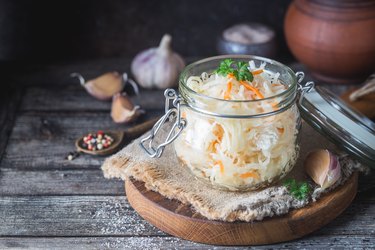
Fermented vegetables, like sauerkraut and pickles, are good sources of gut-friendly probiotics, but they tend to have higher levels of histamine, although those levels can fluctuate depending on how they're prepared and how long they've aged.
2. Alcohol

Sure, a responsible glass of wine or two per week might have some health benefits, but if you struggle with histamine intolerance, alcohol — a fermented drink — might be a non-starter. In some beers, the grain used might also contribute to histamine symptoms.
3. Processed Meats
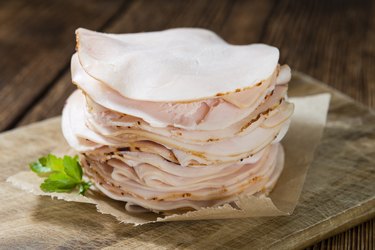
In general, it's sage advice to limit your intake of processed and packaged meats, which, in high amounts, have been linked to chronic diseases including colorectal cancer, according to the World Cancer Research Fund.
Packaged meats, like deli meats, may also contain high amounts of histamine. And it turns out how your meat is cooked may affect histamine levels, too. Frying and grilling meat may increase histamine levels in food, while boiling had little to no effect. In some cases, it may even decrease levels, according to a December 2017 study in Annals of Dermatology.
4. Aged Cheese
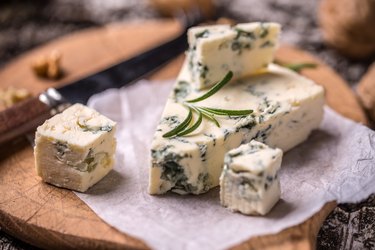
Bad news for cheese and wine lovers: Histamines plague both. Aged cheeses contain high levels of histamine, although the levels tend to vary based on how long a cheese is aged. Some aged cheeses include Gorgonzola, Blue, Gouda, Parmigiano and cheddar.
Because cheese is a good source of nutrients, including protein, fat and calcium, opt for non-aged varieties.
5. Fermented Dairy

Certain dairy products, like buttermilk and kefir, are fermented, making them high in histamine — much like fermented vegetables. Choose non-dairy alternatives like plant-based milks and yogurts.
6. Certain Fish

Not all fish are high in histamine, but certain varieties, including tuna, mackerel, mahi mahi and anchovy, contain high amounts. It's possible to experience histamine toxicity if you have histamine intolerance, according to the American Academy of Allergy, Asthma and Immunology (AAAAI). But this is not an allergic reaction to the fish itself.
The most common cause of this type of histamine toxicity is due to spoiled fish, which, per the AAAAI, causes an overgrowth of bacteria that converts histidine into high levels of histamine.
7. Chocolate
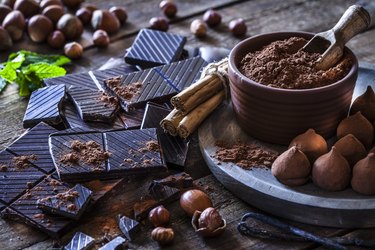
Your favorite sweet treat might also contain high levels of histamine. While it's unclear exactly how much histamine chocolate and cocoa-based products have, a food diary can help determine if they're a trigger food for histamine intolerance.
8. Canned Foods
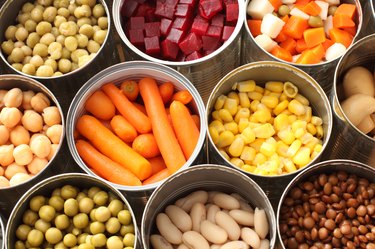
There's no doubt that canned fruits and vegetables are a nutritious option when fresh foods aren't available. But for some, canned foods might trigger a histamine response.
Low-Histamine Foods List
You can safely add the following low-histamine foods to your diet, according to a May 2021 Nutrients report:
- Meat
- Fresh fish
- Chicken
- Eggs
- Fresh fruits (except for plantains, which can be high in histamine)
- Fresh vegetables (except for tomatoes, eggplant and spinach)
- Grains and grain products
- Dairy milk and milk products, including goat and sheep milk
- Cream cheese, mozzarella, butter
- Most cooking oils
- Most leafy herbs
- Herbal teas
Are Bananas High in Histamine?
Bananas aren't high in histamine, specifically, but they do contain another compound called putrescine that may be problematic for people with a histamine intolerance. Putrescine is thought to interfere with histamine degradation and boost the toxic potential of histamine, per the May 2021 Nutrients report.
- U.S. National Library of Medicine: "Histamine: The Stuff Allergies are Made of"
- Journal of Physiology and Biology: "Low Serum Diamine Oxidase (DAO) Activity Levels in Patients With Migraine"
- World Cancer Research Fund: "Limit Red and Processed Meat"
- Annals of Dermatology: "Effect of Different Cooking Methods on Histamine Levels in Selected Foods"
- American Academy of Allergy, Asthma and Immunology: "Histamine Toxicity"